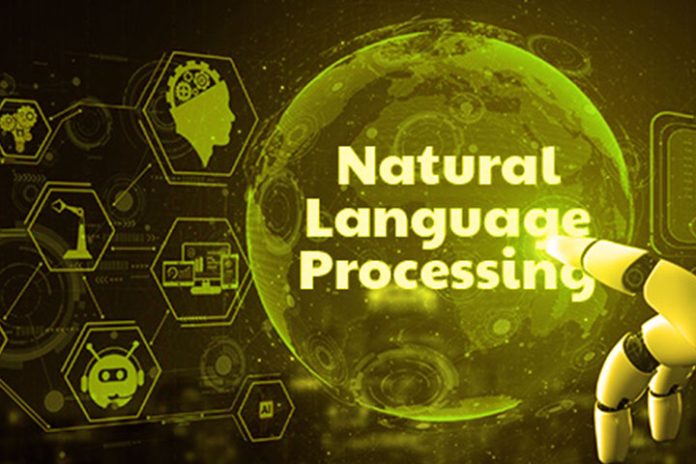Natural Language Processing (NLP) is an essential branch of artificial intelligence. It deals with how computers interact and understand human language. Learn the concepts, methods, and applications of NLP, the future of automated communication. Like its role in automatic translation, voice recognition, and many other functions.
Understand the concept of natural language processing
Natural Language Processing (NLP), called Natural Language Processing in English, is a field of artificial intelligence. NLP aims to enable machines to understand, analyze, and naturally generate human language. Natural language is complex, contextual, and sometimes ambiguous, unlike formal programming.
NLP involves, among other things, the use of Learning and automatic language processing techniques. They are used to extract meaningful information from textual and linguistic data. Computers can thus grasp the meaning of words and the relationships between them. They understand the overall context of a conversation or a text.
The applications of NLP are ambitious and varied. It can be used for machine translation. Machines can translate texts from one language to another with precision. Speech recognition transforms speech into text. (Discover our comparison of the best voice recognition software.) Voice assistance allows users to interact with devices such as virtual assistants.
NLP systems can also analyze large sets of textual data to derive meaningful insights. They, therefore, facilitate the study of sentiments, the categorization of documents, and many other tasks.
How does natural language processing work?
NLP involves a complex process of processing real-world language data and making it understandable to computers.
1. The data preparation stage
The first step in the NLP process is information preparation. Machines use sensors, analogous to our eyes and ears, to read and hear text data. Before processing this data, it must be collected and cleaned. This cleaning removes typographical errors, HTML tags, and other unwanted elements from text data.
2. Syntactic and semantic analysis
Syntactic analysis is the study of language according to grammatical rules. It applies to groups of words rather than single words. Semantic analysis helps to decipher the meaning and logic of a statement. She interprets words, signs, and sentence structures to understand their meaning.
3. The learning phase
The learning phase is crucial. It consists of creating algorithms capable of understanding and interpreting human language. This phase is divided into two main steps: data pre-processing and algorithm development.
Data pre-processing
Data pre-processing is essential for machines to take advantage of it. It also makes it possible to highlight the characteristics of the text that the algorithm can use. Different approaches are deployed to transform raw textual data into actionable data.
Programming languages like Python or R are often used for these techniques. They are equipped with libraries containing rules and methods to classify text segments.
- Bags of words: This model counts the occurrences of words in a text or email, creating a matrix of occurrences. It does not take syntax or semantics into account, limiting contextual analysis.
- Tokenization: This practice splits the text into sentences or words (tokens), thus eliminating unwanted characters such as punctuation.
- Stemming: This method removes prefixes and suffixes from words to restrict them to their base form.
- Lemmatization: It reduces a word to its root and considers the context to identify different forms of the same word. Access to dictionaries is essential for algorithms to find suitable radicals.
- Removal of Stop Words: Pronouns, articles, and prepositions are removed to speed up processing.
- Topic modeling: This approach classifies documents according to topics, revealing hidden structures and helping to detect trending topics on the web.
The development of the algorithm
The next step is to develop an algorithm to interpret the data. There are three main approaches.
- Linguistic rules: They solve elementary challenges like developing structured data from unstructured content.
- Machine Learning: involves using training data to enable a system to learn automatically.
- Deep Learning: It uses neural networks with several layers. This method deals with complex tasks like translation through iterative Learning.
Also Read: AI Marketing: Artificial Intelligence And Marketing For Companies
The different possible applications of natural language processing
Natural language processing (NLP) finds myriad applications in the modern world as a critical driver of artificial intelligence. Here are some of the more notable examples:
1. Identification of spam
NLP plays a central role in creating sophisticated and effective spam detection systems. It helps recognize the subtle signals that distinguish legitimate emails from spam. Algorithms examine textual content for suspicious linguistic patterns.
Based on machine learning models, NLP performs automatic classification, allowing their identification. Semantic analysis helps identify typical spam wordings.
2. Automatic language conversion
Technologies like Google Translate illustrate the application of NLP in machine translation. The most effective ones go beyond simply replacing words from one language to another. They capture the meaning and tone of the source language to convey them in the target language accurately.
3. Virtual agents and conversational assistants
Siri, Alexa, and chatbots employ voice recognition and natural language generation to interact with users. The most advanced are now learning to identify contextual clues to human requests. Future improvement aims to enable chatbots to answer questions in a relevant and autonomous manner.
4. Analysis of exchanges on social networks
NLP is a business asset for uncovering hidden information in social media. Sentiment analysis evaluates the language used in social media posts, reviews, and responses. This makes obtaining feedback on promotional offers, products, or events possible. Valuable information that helps in the research and development of new products or optimize advertising campaigns.
5. Automatic text synthesis
Text summarization, supported by NLP techniques, condenses vast amounts of textual content into summaries and summaries. These summaries or reports are intended for indexes, research databases, or people who prefer abbreviated versions. Advanced text synthesis applications rely on semantic understanding and natural language generation (NLG).
6. Automation of routine tasks
Chatbots, powered by NLP, can efficiently handle many repetitive tasks. Like digital assistants, they can recognize a large number of requests. They can respond accurately by matching them to the correct entries in their database.
7. Improved research
The application of NLP enriches the search by eliminating ambiguities related to the meaning of words (table for furniture, table for data series). It distinguishes synonyms and considers morphological variations depending on the context (shopping, running). University research systems integrating NLP significantly increase accessibility to relevant work for experts and researchers.
8. Search Engine Optimization
NLP makes optimizing a company’s online content more accessible by identifying essential search terms. This leads to better visibility in search results, which can attract more targeted and engaged traffic. By understanding and meeting users’ needs, the company can improve its position on search engines.
9. Analysis and structuring of documents
NLP techniques play a vital role in analyzing and organizing extensive collections of documents. They simplify the task by identifying similar posts and revealing dominant themes. These approaches are valuable in various areas, from business to legal research.
What are the main challenges of natural language processing?
NLP presents several challenges that reflect the complexity of human language and the program’s underlying technology. The diversity of human language forms one of the main obstacles. Languages have varied structures and rules, with different dialects, idioms, and levels of formality. Adapting NLP models to these variations requires considerable effort.
The subjectivity of language embodies a significant challenge. The nuances, metaphors, and connotations of each language make it difficult to understand sentences’ emotional and intentional context. This sometimes causes erroneous interpretations.
Lack of data poses a barrier for less common languages and areas of specialization. NLP models require large datasets for machine learning. This requirement limits their effectiveness for less frequently used languages.
The complexity of NLP systems is another challenge. NLP systems combine parsing, semantics, and natural language generation techniques. They make their development and maintenance difficult.
The cost of NLP systems is also a significant barrier. Training and deploying sophisticated NLP models requires considerable computing resources and specialized technical skills in computer programs. The necessary budget can make access to these technologies difficult for some organizations.
Also Read: 5 Emerging Technologies To Accelerate Digital Transformation


